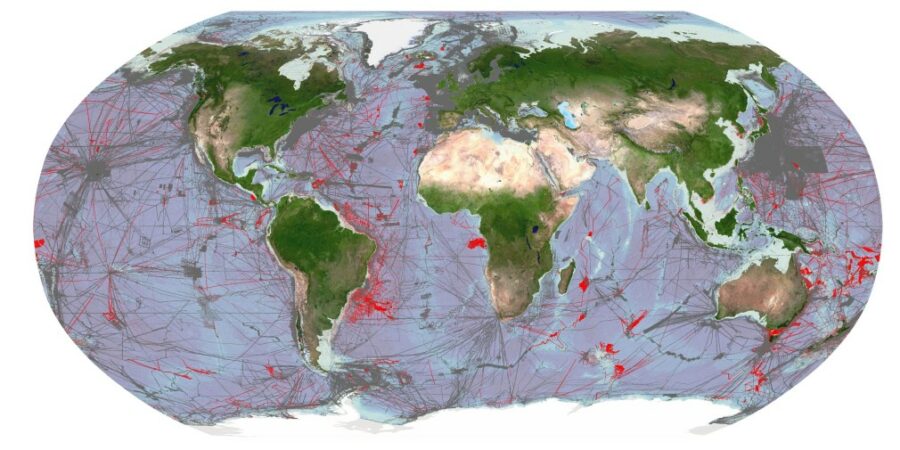When somebody tells you that we know more about space than our own oceans, they might actually be accurate in that statement.
While space is infinite – in our understanding of it at least – the oceans aren’t, so one would assume we’d understand the waters of our own planet. Unfortunately, water isn’t empty space and that makes exploring the depths of our seas tricky.
Tricky, but not impossible as one initiative is proving. The Nippon Foundation-GEBCO Seabed 2030 Project is an international effort to map the floors of our oceans and this week it announced it had mapped 23.4 percent of the space.
This is an increase of 10.1 million square kilometres compared to the data it accumulated last year. This area is roughly the size of Europe so it’s a rather monumental feat.

Credit: The Nippon Foundation-GEBCO Seabed 2030 Global Center (GDACC) on behalf of Seabed 2030.
“Despite covering over 70 per cent of the planet, our knowledge of what lies beneath the blue surface has been severely limited. Without this crucial information we cannot possibly set about having a sustainable future – a complete map of the ocean floor is the missing tool that will enable us to tackle some of the most pressing environmental challenges of our time, including climate change and marine pollution. It will enable us to safeguard the planet’s future,” explains executive director of the Nippon Foundation, Mitsuyuki Unno.
In addition to helping us potentially understand climate change better, the foundation says that mapping the ocean floor could help humanity understand how it impacts drinking water, food, oxygen and more.
Perhaps most exciting is that this data is available for free over on the General Bathymetric Chart of the Oceans website.
The Nippon Foundation-GEBCO Seabed 2030 Project also announced a partnership with the United States’ National Oceanic and Atmospheric Administration (NOAA) at an event in Portugal this week
“We are delighted to announce our latest partnership with NOAA. The expertise offered by this well-established institution and its scientists will play an invaluable role in taking us one step closer to the finish line,” said head of partnerships at Seabed 2030, Stephen Hall.
“We intend to hit the ground running with the time remaining and signing this significant MOU at our event here in Lisbon is a testament to exactly that. Every minute counts,” added Hall.
We look forward to seeing this partnership push these efforts forward and one day having detailed map and hopefully, a deeper understanding of our oceans.
[Main Image – CC 0 Pixabay]

